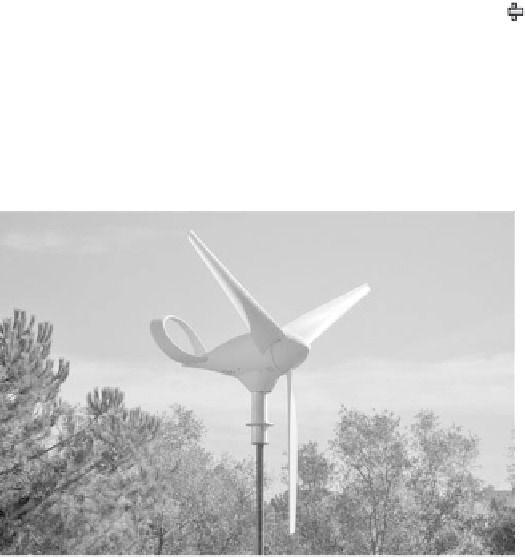Environmental Engineering Reference
In-Depth Information
(a)
(b)
(c)
(d)
Figure 6 : Various types of tail wings.
Figure 7: Modern tail wing (Courtesy of Anna Estanqueiro, IEA WIND).
Figure 6 shows a various shapes of tail wings. There is no ultimate shape of the
tail wing at all, because there are many yaw control strategies at one hand, there
are many wind characteristics depending on the site at another.
The yaw control moment is the product of aerodynamic force on the aerody-
namic centre of the wing and the distance from yaw axis to the centre. The tail
wing (a) has much small aspect ratio than the tail wing (b). Then wing type (a) has
smaller lift coeffi cient at small attack angles, i.e. less yaw control force than type
(b). However, under high turbulent wind conditions, too strong control force will
sometimes bring unstable yaw motion.
7.1.2 New types of tail wings
Some unique and advanced types have been developed. The tail wing design shown
in Fig. 7 has an elegant shape.
A swing ladder shown in Fig. 8 is a swinging tail wing. The ladder which
works as a wing is pin-jointed to the tail-end of the nacelle free in rotation around
the pin-axis. This system responds fl exible to varying wind speed and directions
and one of the large advantages is the regulative effect that prevents the excessive
response and oscillating motion of the tail.























Search WWH ::

Custom Search